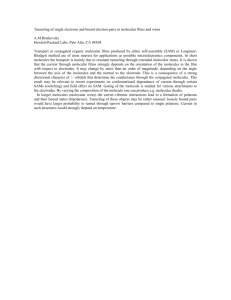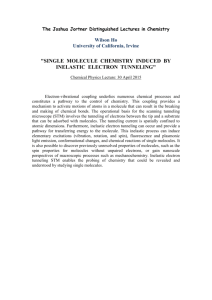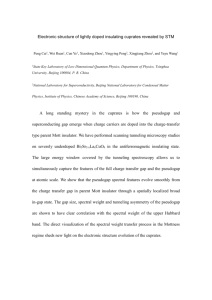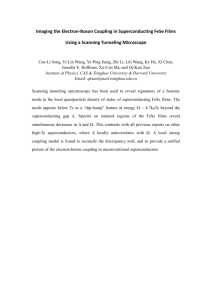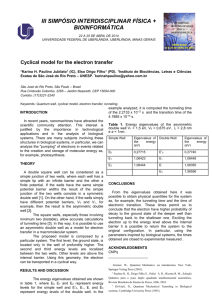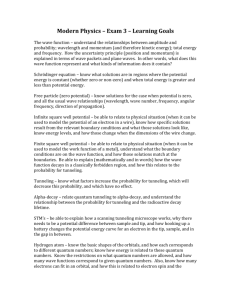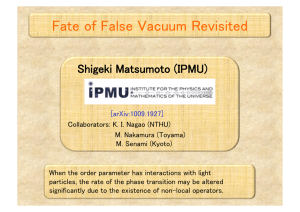Scanning Tunneling Microscopy of Adsorbates on Insulating Films
advertisement
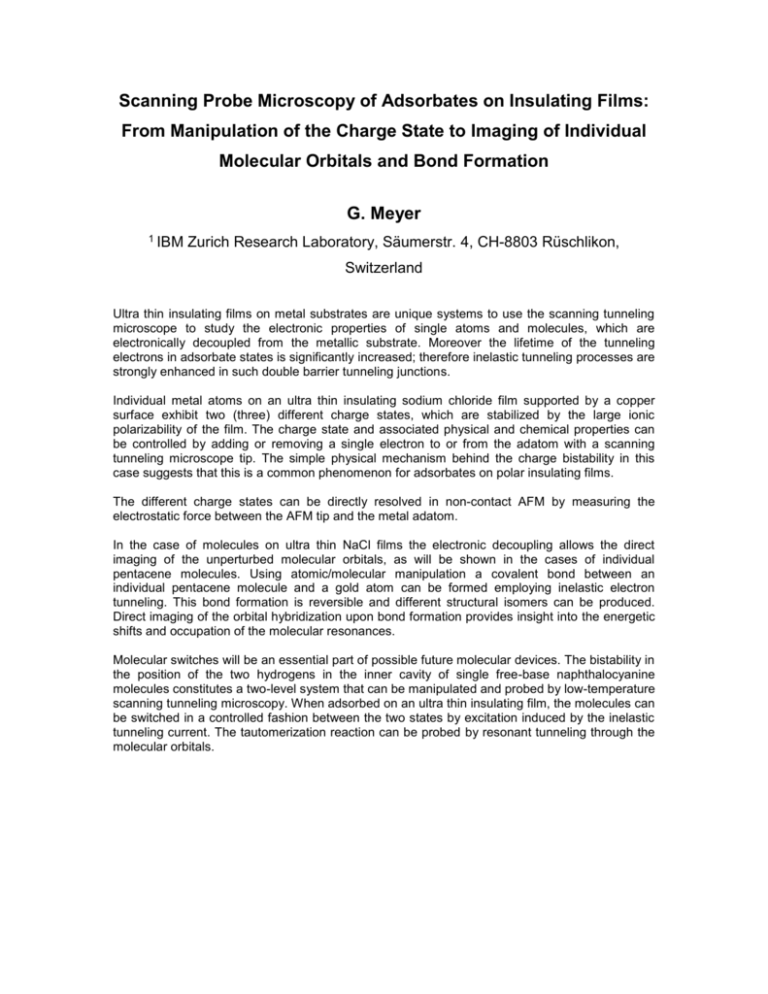
Scanning Probe Microscopy of Adsorbates on Insulating Films: From Manipulation of the Charge State to Imaging of Individual Molecular Orbitals and Bond Formation G. Meyer 1 IBM Zurich Research Laboratory, Säumerstr. 4, CH-8803 Rüschlikon, Switzerland Ultra thin insulating films on metal substrates are unique systems to use the scanning tunneling microscope to study the electronic properties of single atoms and molecules, which are electronically decoupled from the metallic substrate. Moreover the lifetime of the tunneling electrons in adsorbate states is significantly increased; therefore inelastic tunneling processes are strongly enhanced in such double barrier tunneling junctions. Individual metal atoms on an ultra thin insulating sodium chloride film supported by a copper surface exhibit two (three) different charge states, which are stabilized by the large ionic polarizability of the film. The charge state and associated physical and chemical properties can be controlled by adding or removing a single electron to or from the adatom with a scanning tunneling microscope tip. The simple physical mechanism behind the charge bistability in this case suggests that this is a common phenomenon for adsorbates on polar insulating films. The different charge states can be directly resolved in non-contact AFM by measuring the electrostatic force between the AFM tip and the metal adatom. In the case of molecules on ultra thin NaCl films the electronic decoupling allows the direct imaging of the unperturbed molecular orbitals, as will be shown in the cases of individual pentacene molecules. Using atomic/molecular manipulation a covalent bond between an individual pentacene molecule and a gold atom can be formed employing inelastic electron tunneling. This bond formation is reversible and different structural isomers can be produced. Direct imaging of the orbital hybridization upon bond formation provides insight into the energetic shifts and occupation of the molecular resonances. Molecular switches will be an essential part of possible future molecular devices. The bistability in the position of the two hydrogens in the inner cavity of single free-base naphthalocyanine molecules constitutes a two-level system that can be manipulated and probed by low-temperature scanning tunneling microscopy. When adsorbed on an ultra thin insulating film, the molecules can be switched in a controlled fashion between the two states by excitation induced by the inelastic tunneling current. The tautomerization reaction can be probed by resonant tunneling through the molecular orbitals.
